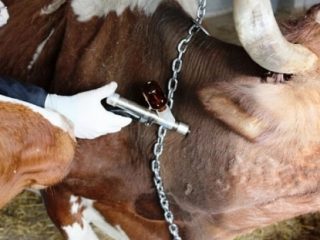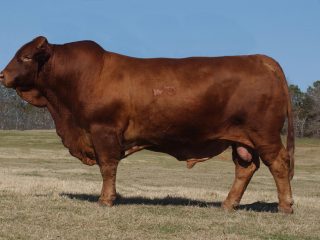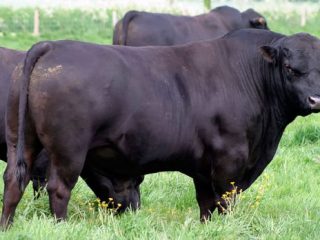Content
Bovine paramphistomatosis is a disease caused by trematodes of the paramphistomat suborder, which parasitize the gastrointestinal tract of cows: abomasum, rumen, mesh, as well as in the small intestine. Infection with paramphistomatosis occurs through nutritional means when grazing animals in the area of water meadows, in floodplains of rivers with water and grass. The acute course of the disease begins several weeks after the parasite enters the body of cattle.
The pathology causes significant damage to livestock production along with other parasitic diseases of cows. The disease is widespread in Australia, Europe, Asia and Africa. Cases of bovine paramphistomatosis are constantly being recorded in Ukraine and Belarus. On the territory of Russia it occurs in different seasons in some areas of the Central region, in the Black Earth Region, in the Far East and in the south of the country.
What is paramphistomatosis
Bovine paramphistomatosis is a helminthic disease. It is characterized by an acute and chronic course with a lag in the development of animals, and in young animals there is a high probability of death.
The causative agent of the disease in cattle is a trematode.It is small in size - up to 20 mm. It has a spindle-shaped body of a pink hue. Round in cross section. It is fixed with the help of a ventral sucker at the posterior end of the body, while the oral sucker is absent. The reproductive organs include the testis, uterus, vitelline, and ovary. Intermediate hosts for them are various types of mollusks.
Helminth eggs are quite large, round in shape, and gray in color. They are released into the environment with animal feces. At a comfortable temperature for them (19-28 °C), a meracidium (larva) emerges from the eggs after a couple of weeks. It penetrates the body of the shell mollusk, forming maternal redia in its liver. After 10-12 days, daughter redia are formed from them, in which cercariae develop. They remain in the body of the intermediate host for up to 3 months. Then they come out, attach to the grass and become infectious to cattle. After ingestion by animals, adolexaria are released from the cysts and penetrate the mucous membranes, attaching to the villi.
Cattle can become infected with paramphistomatosis on pasture during watering. Paramphistomata are localized in the intestinal mucosa of the individual and move into the rumen. There the period of puberty occurs, which lasts about 4 months.
Symptoms of paramphistomatosis in cattle
Clinical symptoms are most pronounced in the acute course of paramphistomatosis. Cattle note:
- oppression, general weakness;
- lack of appetite;
- indomitable thirst;
- development of anorexia;
- diarrhea mixed with blood and mucus that does not stop for more than a month;
- dull, tousled coat and sunken sides noted;
- increased body temperature;
- rapid exhaustion of the body;
- the tail and fur in the anal area are stained with feces.
The chronic course of paramphistomatosis in cattle is often a consequence of an acute illness or the gradual spread of parasites by young individuals over a long period of time with a small number of trematodes. At the same time, cattle suffer from long-term incessant diarrhea, anemia, swelling of the dewlap and intermaxillary space, and decreased body condition. Dairy cows dramatically lose productivity.
Sexually mature paramphistomatous individuals more often affect the body of infected livestock locally. While young trematodes, parasitizing in the intestines and abomasum, cause their significant changes. Therefore, the disease in young cattle is complex and often ends in the death of animals. Paramphistomatosis is aggravated by secondary infection as a result of mechanical and trophic effects.
Diagnosis of paramphistomatosis
The diagnosis of paramphistomatosis of a sick individual cattle is made taking into account epidemiological data, clinical manifestations of the disease and laboratory tests.
The acute form of paramphistomatosis is diagnosed by fecal helminthoscopy. To do this, 200 g of feces are taken from cattle for analysis and examined by sequential washing. The effectiveness of this method is about 80%. Helminthocoproscopic studies are carried out to identify the chronic form of the disease. Bovine paramphistomatosis, a particularly acute manifestation of the disease, should be differentiated from a number of other similar pathologies.
Dead animals are subjected to autopsy. Carefully examine the stomach, duodenum, abomasum, and rumen.The veterinarian notes the general exhaustion of the cattle that died from paramphistomatosis, a gelatinous infiltrate in the intermaxillary space, swelling and hemorrhagic inflammation of the duodenum and parts of the stomach. The gallbladder is significantly enlarged in size and contains mucus and flukes. Young parasites are often found in the abomasum, bile ducts, peritoneum, and renal pelvis. Traces of blood are visible in the small intestine of cattle. Lymph nodes with paramphistomatosis are swollen and slightly enlarged.
Treatment of paramphistomatosis in cattle
Veterinary specialists consider the drug Bithionol or its analogue biltricide to be the most effective remedy against paramphistomatosis in ruminants. It is prescribed to cattle in a dosage depending on the body weight of the sick animal after a fasting diet for 12 hours. It should be used twice with an interval of 10 days. Based on the condition of the individual, symptomatic treatment is carried out.
Prevention of paramphistomatosis in cattle
Farms suffer enormous economic losses when paramphistomatosis occurs in cattle. The main preventive measures should be aimed at preventing the disease, since it is quite difficult to fight it and sometimes it is impossible to achieve a complete recovery.
Cattle breeders should not let young cattle roam; it is better to make them a separate paddock, create an artificial dry pasture away from various bodies of water.It is necessary to carry out timely deworming before the start of the stall period with laboratory control by veterinarians. Flooded pastures need to be examined for the presence of an intermediate host - shell mollusks. If it is detected, herbs from these places should not be fed to animals. First, the pastures are drained, plowed, checked again, and then used for their intended purpose. Cattle can be given water during grazing only with imported water. Manure should be disinfected biothermally.
Conclusion
Paramphistomatosis in cattle is a disease that is extremely difficult to get rid of. It often leads to the death of animals and infection of the entire herd. Paramphistomatosis causes serious damage to farms. Sometimes it kills up to 50% of the cattle population and reduces the productivity of dairy cows. At the same time, preventive measures are quite simple, one of which is deworming the herd.














